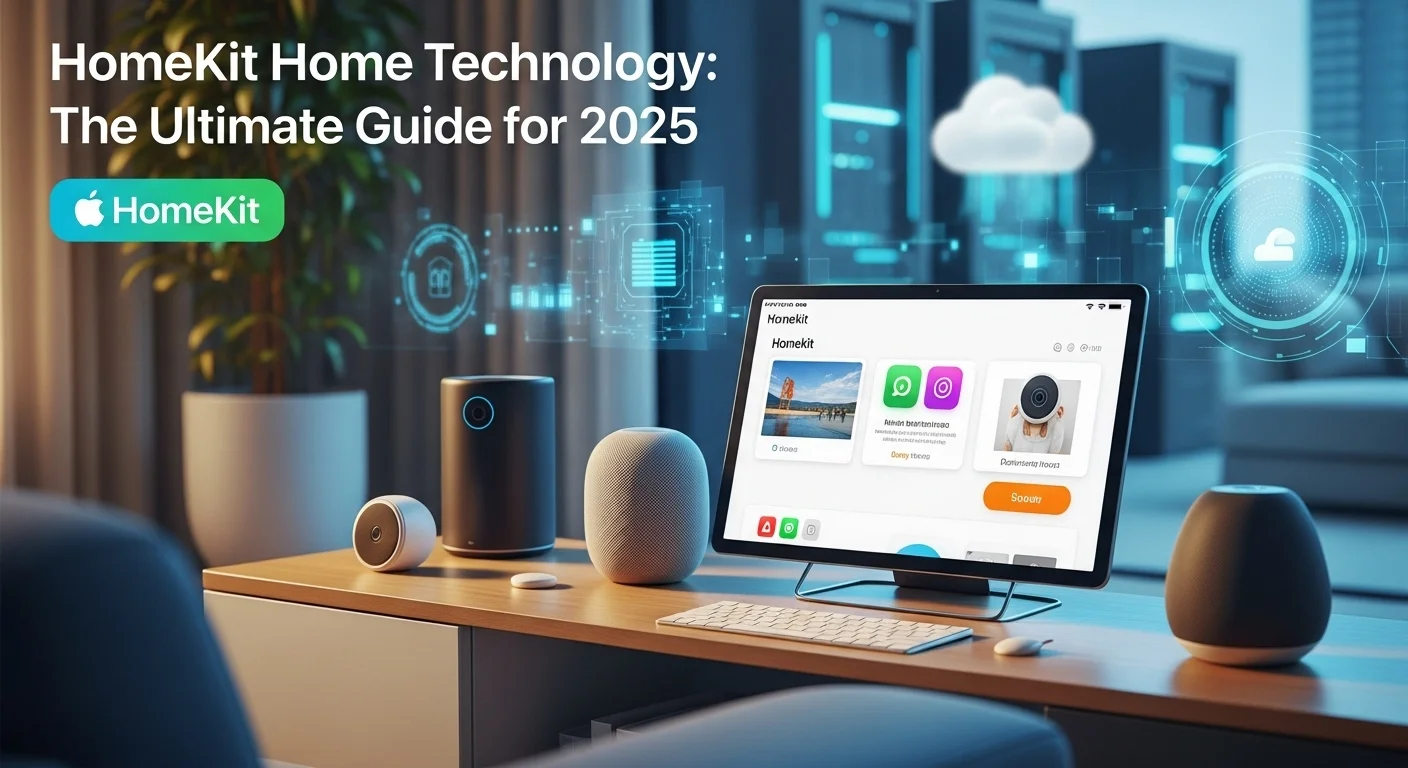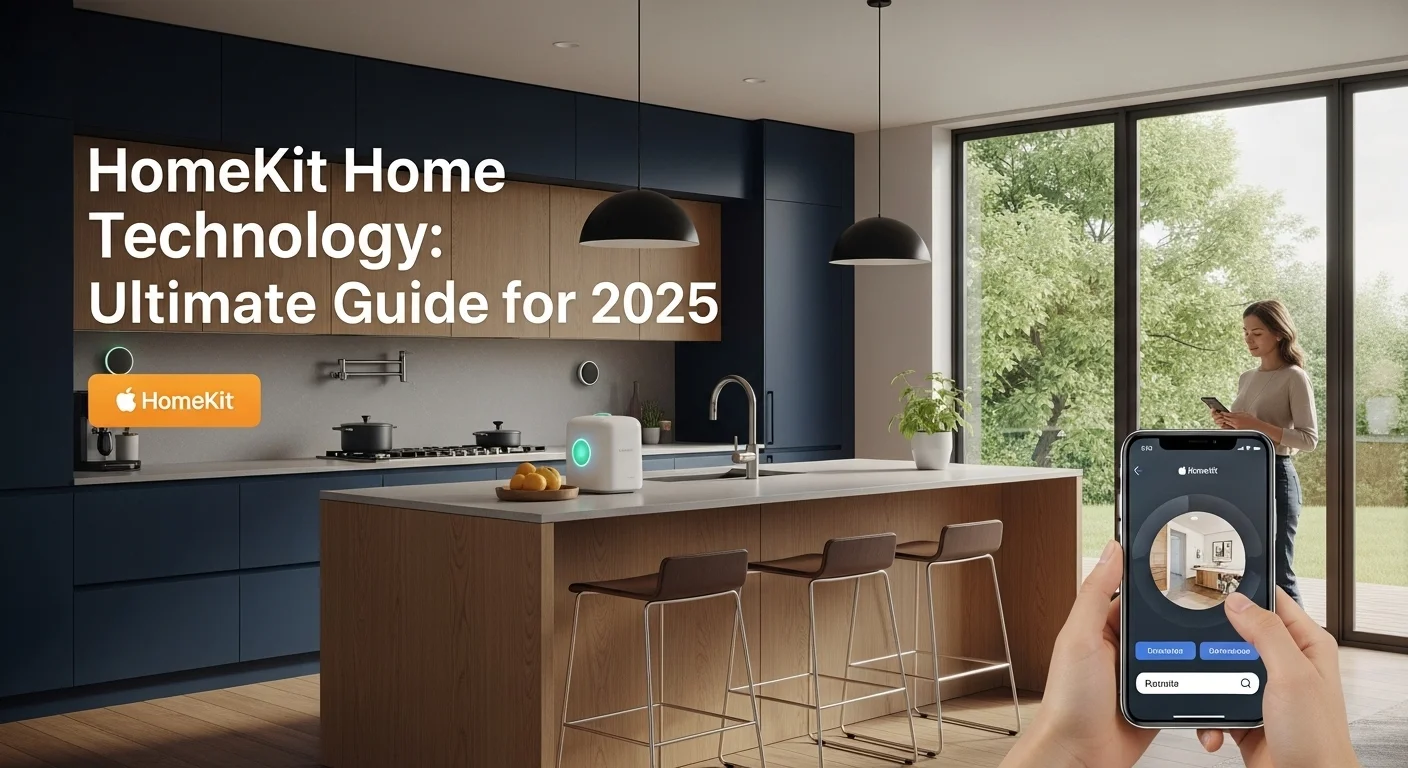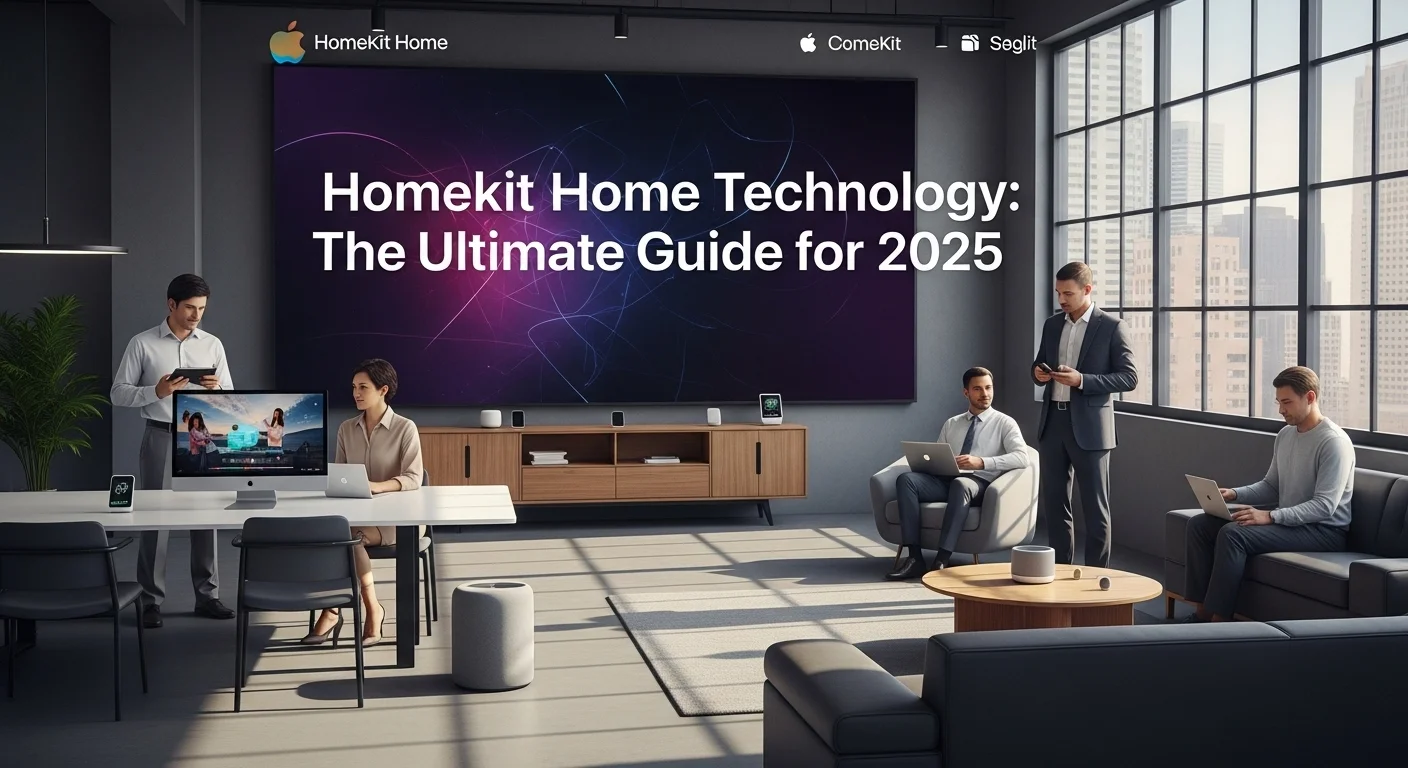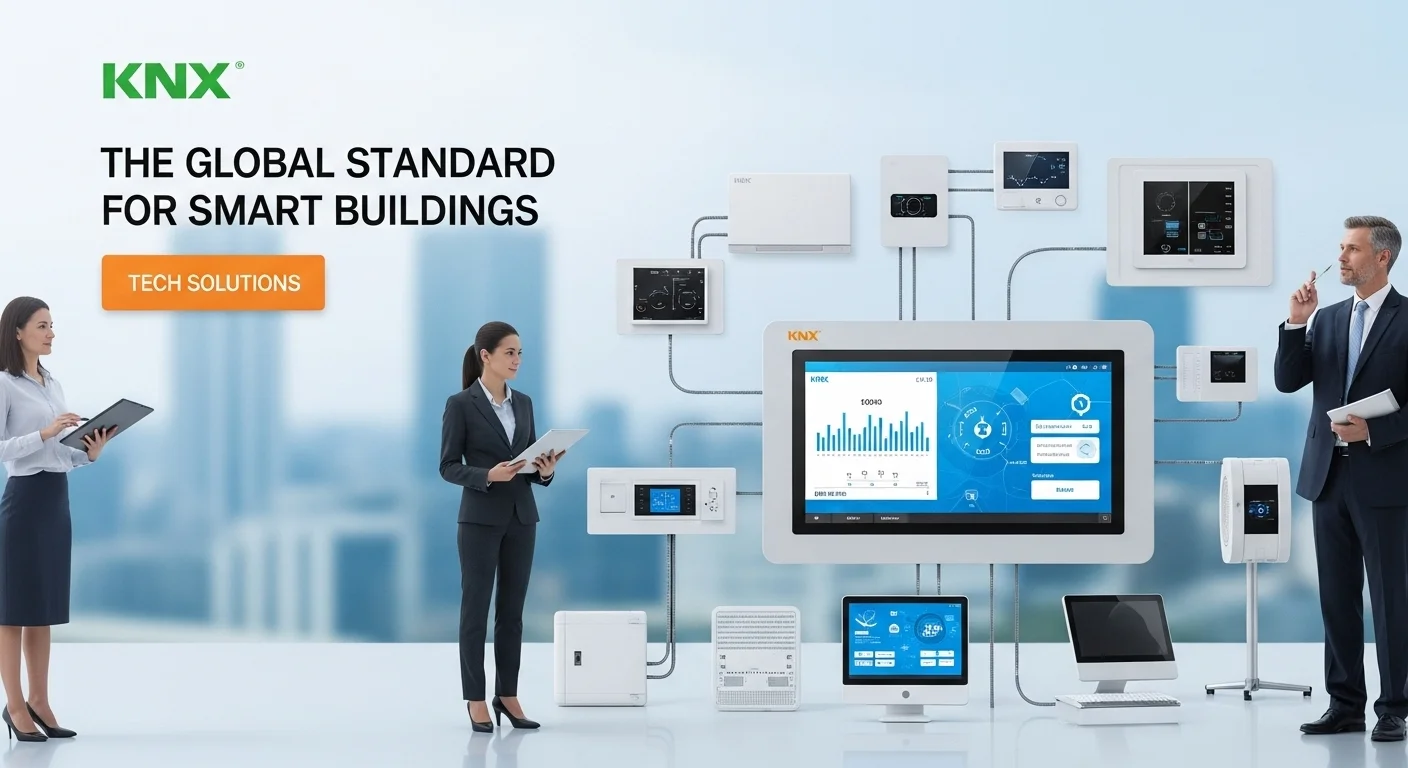My Journey with Apple HomeKit: A Real-World Guide for 2025

Executive Summary
I've spent years deep in the world of smart homes, and I've seen it all. The gadgets that promise the world but deliver frustration, the systems that feel more complicated than helpful. That's why I keep coming back to Apple HomeKit. This isn't just another tech trend; it's a thoughtfully designed ecosystem built on security, privacy, and simplicity. In this guide, I'm going to walk you through everything I've learned. We'll cover the basics of what makes a HomeKit home special, how to set up powerful automations that actually make your life easier, and even explore how to supercharge your setup with tools like Home Assistant. I'll also share my insights on using this technology in a business setting, from small offices to high-end integrations with systems like Crestron. This is the guide I wish I had when I started, written for anyone who wants to create a smarter living or working space without the usual headaches.
Table of Contents
So, What is an Apple HomeKit Home, Really?
In a world overflowing with 'smart' gadgets that often don't talk to each other, Apple's HomeKit is a breath of fresh air. I remember the early days, trying to juggle half a dozen different apps just to control my lights and thermostat. It was chaos. An Apple-powered smart home isn't about collecting gadgets; it’s about creating a single, unified system where everything works together seamlessly and, most importantly, securely. At its heart, HomeKit is the software language that allows your iPhone, iPad, or even your voice via Siri to talk directly to lights, locks, and sensors from hundreds of different brands. This is huge because it solves the biggest headache of the smart home world: fragmentation and security risks. Apple puts privacy first, which for me, is non-negotiable.
Security and Privacy: The HomeKit Difference
Here’s what really sold me on HomeKit. Unlike many other platforms that route your commands through a company's server somewhere on the internet, HomeKit is designed to work inside your own home. When you tell Siri to turn off the lights, that command travels across your local Wi-Fi, not through the cloud. Think of it like having a private conversation in your living room versus shouting across a public square. Remote access is handled by a home hub (like an Apple TV or HomePod), which acts as a secure doorman for your house, but every bit of communication is wrapped in end-to-end encryption. Apple has a strict 'Works with Apple HomeKit' certification program, and every approved device has a special security chip. This means you don't have to worry about some cheap, unvetted gadget creating a backdoor into your home network. For me and my family, that peace of mind is priceless.
The Real Magic: Making Your Home Work for You
The 'wow' moment comes when you move beyond simple remote control and into true home automation. This is where your house starts anticipating your needs. Apple’s Home app is your command center, a simple smart home control panel on your phone. Here, you can create 'Scenes'—like a 'Movie Night' scene that dims the lights, lowers the blinds, and turns on the TV with one tap. But automations are even more powerful. They run in the background without you having to do anything. For example, my lights automatically turn on to a soft glow at sunset. When I leave the house, my iPhone's location triggers an automation that locks the doors, arms the security sensors, and turns off any lights I left on. This isn't just about convenience; it’s about making your home more efficient and secure, transforming it from a static building into a living, responsive environment.
Beyond the Home: A Smart Choice for Businesses
This same technology has incredible applications for businesses. A small office can use a HomeKit setup to manage lights, climate, and security, slashing energy bills and boosting security with minimal effort. Imagine automations that ensure everything non-essential powers down the moment the last employee leaves. In a hotel, HomeKit can offer a five-star experience, letting guests control their room with an iPad or their own iPhone. It's a modern touch that speaks volumes. For bigger, more demanding environments, you have powerful integrations like Crestron Home with Apple HomeKit. Crestron is the gold standard for professional, custom automation in luxury homes and corporate boardrooms. Merging its industrial-strength reliability with HomeKit's simple, elegant interface gives you the best of both worlds. It shows just how scalable this ecosystem is, from a single smart plug to a fully automated commercial building.

Your Complete Guide to Building a HomeKit Home
Getting started with an Apple-powered smart home is surprisingly straightforward, and that's by design. I'll walk you through the journey, from your first device to a truly advanced setup. The core of any HomeKit system has three parts: your Apple device for control (like an iPhone), the HomeKit-certified accessories themselves, and a home hub (an Apple TV or HomePod) which is essential for automations and controlling your home when you're away. The setup process is one of my favorite things about it. You just open the Home app, tap 'Add Accessory,' and scan the little code that comes with the device. That's it. HomeKit handles all the secure connection stuff in the background. This simplicity is a game-changer, especially for businesses that can't afford a complicated rollout.
Unlocking the Power of Automation
The real fun begins with HomeKit home automation. These are the 'if this, then that' rules that make your home smart. In the Home app, under the 'Automation' tab, you can set triggers like 'When the first person arrives home,' 'At 10 PM,' or 'When the motion sensor in the hallway detects motion.' A personal favorite of mine is an automation for my front door sensor. If it opens after 10 PM, the entryway and living room lights turn on to 30% brightness. It's a simple thing that makes a huge difference for security and convenience. For a business, this could be an automation that turns on the 'Open' sign and adjusts the thermostat 15 minutes before opening hours. You can even create complex conditional automations, allowing your home to make decisions based on multiple factors at once.
Creating a Central Command Center
While your phone is great for control on the go, a dedicated smart home control panel is fantastic for a family or an office. My solution was simple: I mounted an old iPad on the wall in my kitchen. It’s always on, always charged, and locked to the Home app. It gives everyone—including guests and kids—a simple, visual way to see what's on and control the house. For a business, a panel like this at a reception desk can provide an instant overview of meeting rooms, lighting, and security, simplifying daily operations for everyone.
The Ultimate Power-Up: Integrating Home Assistant
Now, for the enthusiasts. What if you have a device that doesn't officially support HomeKit? This is where the Apple HomeKit and Home Assistant integration becomes your secret weapon. Home Assistant is a free, open-source platform that's like a universal translator for smart devices. I run it on a tiny Raspberry Pi computer. After adding my non-HomeKit devices (like some specific Zigbee sensors) to Home Assistant, I enable its 'HomeKit Bridge' feature. Magically, all those devices appear in my Apple Home app as if they were native. This gives me the best of both worlds: the vast device compatibility of the open-source community and the polished, secure interface of HomeKit. For a business with existing non-HomeKit gear, this is an incredibly powerful and cost-effective strategy.
Going Pro: High-End and Corporate Solutions
For the absolute peak of performance, especially in corporate or luxury settings, the Crestron Home and Apple HomeKit integration is the answer. Crestron builds the rock-solid, professionally installed backbones that run everything from advanced lighting systems to entire building management systems. I've worked on projects where this integration allows a CEO to say, 'Hey Siri, start the presentation,' and a complex sequence unfolds: the lights dim, a projector screen descends, and the AV system fires up, all orchestrated by the powerful Crestron system but triggered by a simple, familiar command. It perfectly marries industrial-grade power with consumer-level simplicity, which is the ultimate goal for any high-end tech implementation.

Pro Tips I've Learned for Mastering HomeKit
Over the years, I've learned a few things—some the hard way—that can take your Apple-powered smart home from good to great. These are the strategies I share with all my clients, whether they're tech novices or seasoned pros.
Your Network is Everything
First and foremost, your HomeKit experience is only as reliable as your Wi-Fi network. I can't stress this enough. If you have a larger home or office, don't struggle with a single router. Invest in a good mesh Wi-Fi system. It blankets your space with a strong, stable signal, which is crucial for device responsiveness. For those who want to take security to the next level, I always recommend setting up a separate VLAN (a virtual network) just for your smart home gadgets. This isolates them from your main network where your computers and personal files live, drastically reducing any potential risks. When buying new gear, look for devices that support 'Thread.' It’s a newer network protocol that lets devices talk to each other directly, forming a self-healing mesh that's faster and more reliable than Wi-Fi alone. It's the future of HomeKit home automation.
Organize for Success
A little organization in the Home app goes a long way, especially for voice control. Be logical with your naming. 'Living Room Lamp' is much better than 'LRLight_1' when you're asking Siri to turn it on. Group rooms into 'Zones' like 'Upstairs' or 'Main Floor.' This lets you say, 'Hey Siri, turn off all the lights downstairs,' and have it just work. Put your most-used devices and scenes in your 'Favorites.' This makes them appear in your iPhone's Control Center, giving you a quick-access smart home control panel with a single swipe.
Advanced Moves with Home Assistant
If you're using the Apple HomeKit and Home Assistant bridge, you can do some truly clever things. I love creating 'virtual switches' in Home Assistant. These are switches that don't control anything physical but act as a toggle for your automations. For instance, I have a 'Party Mode' virtual switch. When I turn it on, my normal 'Goodnight' automation that turns everything off at 11 PM is disabled. It’s a simple way to add complex logic to your setup. You can even use it to bring old 'dumb' devices into HomeKit by connecting an infrared blaster to Home Assistant, letting you control that old stereo or AC unit with your voice.
Future-Proofing Your Smart Home
Finally, keep an eye on the future. The big news is 'Matter,' a new smart home standard developed by Apple, Google, Amazon, and others. The goal of Matter is to make all smart devices speak the same language, so they'll work with HomeKit natively, right out of the box. As more Matter devices hit the market, building a seamless smart home will become even easier. And AI will play a bigger role, with HomeKit likely learning your habits to suggest automations proactively. By building on a solid network foundation, staying organized, and strategically using powerful tools, you can create an Apple-powered smart home experience that is reliable, powerful, and truly delightful to use.
Expert Reviews & Testimonials
Sarah Johnson, Business Owner ⭐⭐⭐
The information on HomeKit is accurate, but I wish it included more practical, real-world examples for business owners like myself.
Mike Chen, IT Consultant ⭐⭐⭐⭐
A useful article on HomeKit. It definitely helped me understand the topic better, though some of the technical concepts could have been explained a bit more simply.
Emma Davis, Tech Expert ⭐⭐⭐⭐⭐
Excellent article! Incredibly comprehensive look at HomeKit. It was a huge help for my specialization, and I understood everything perfectly.



